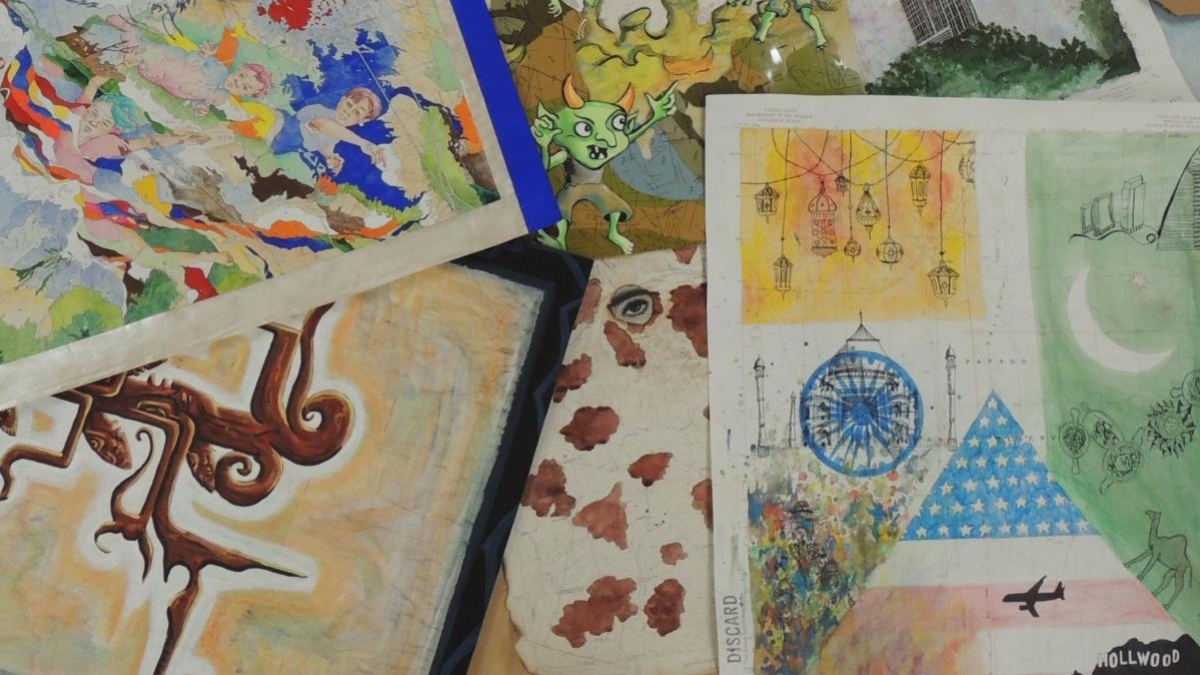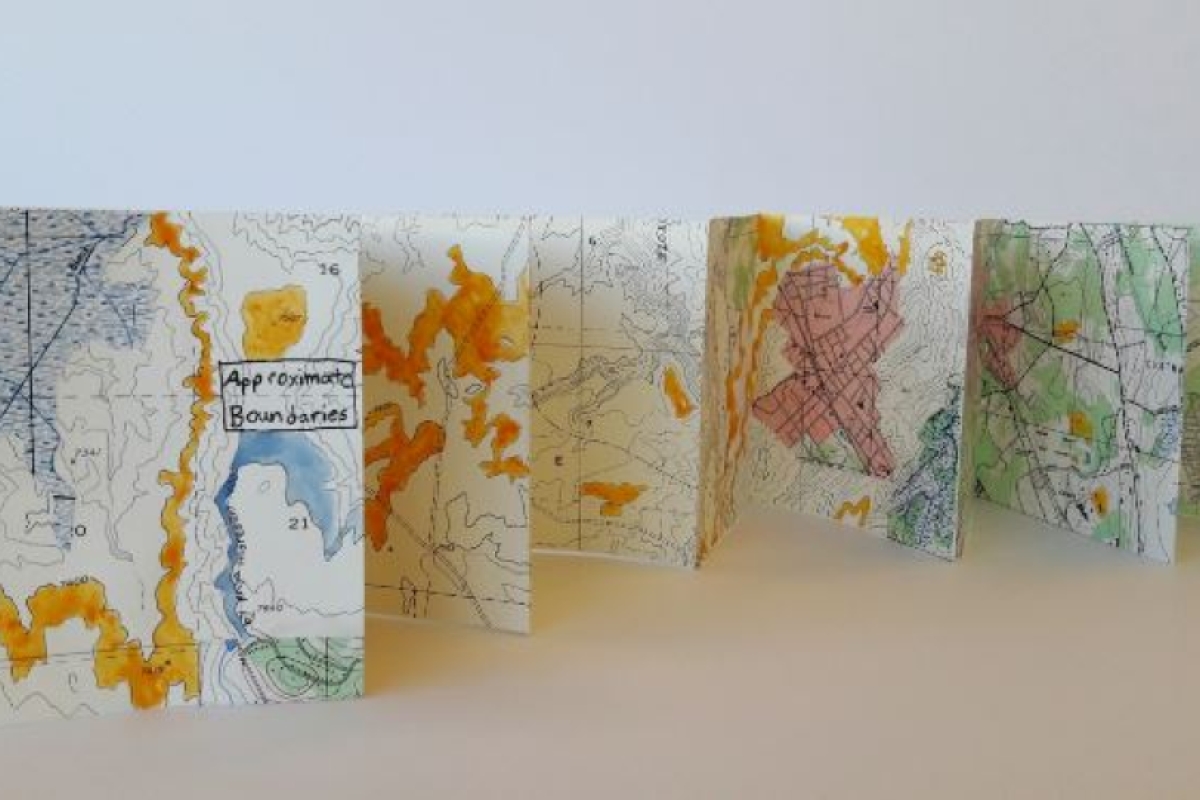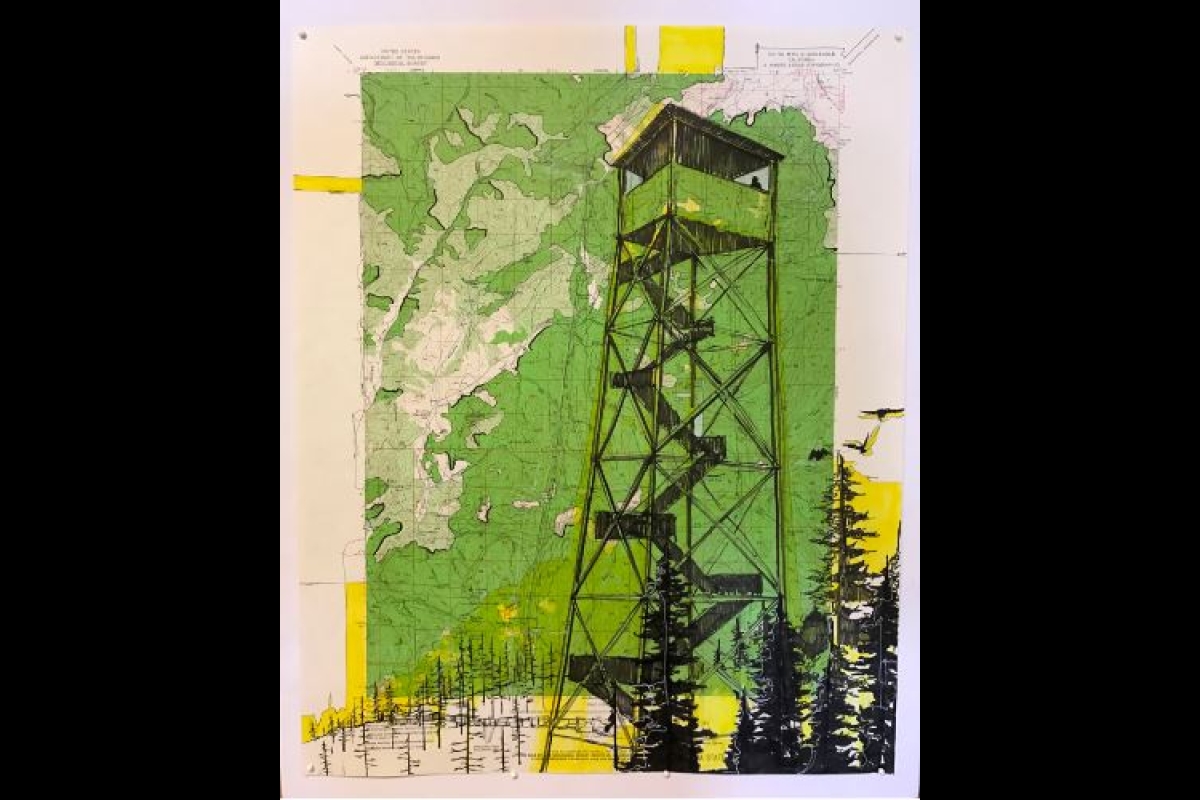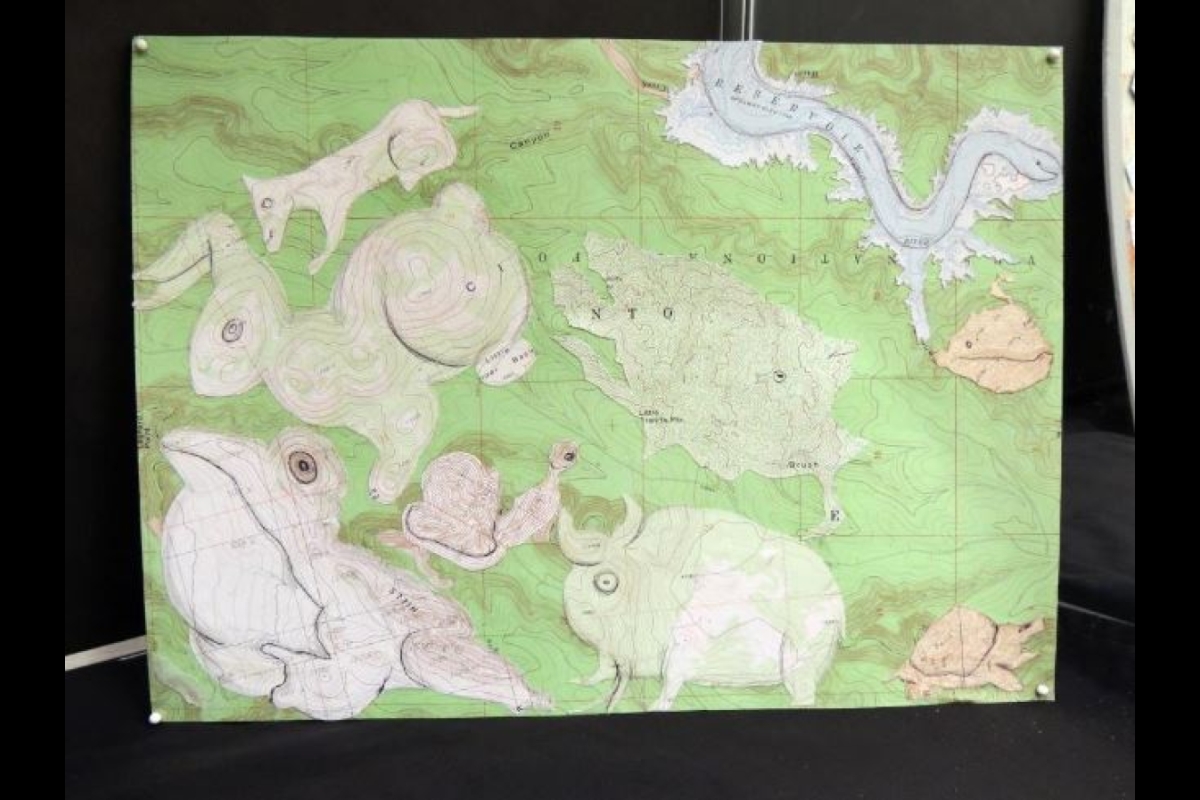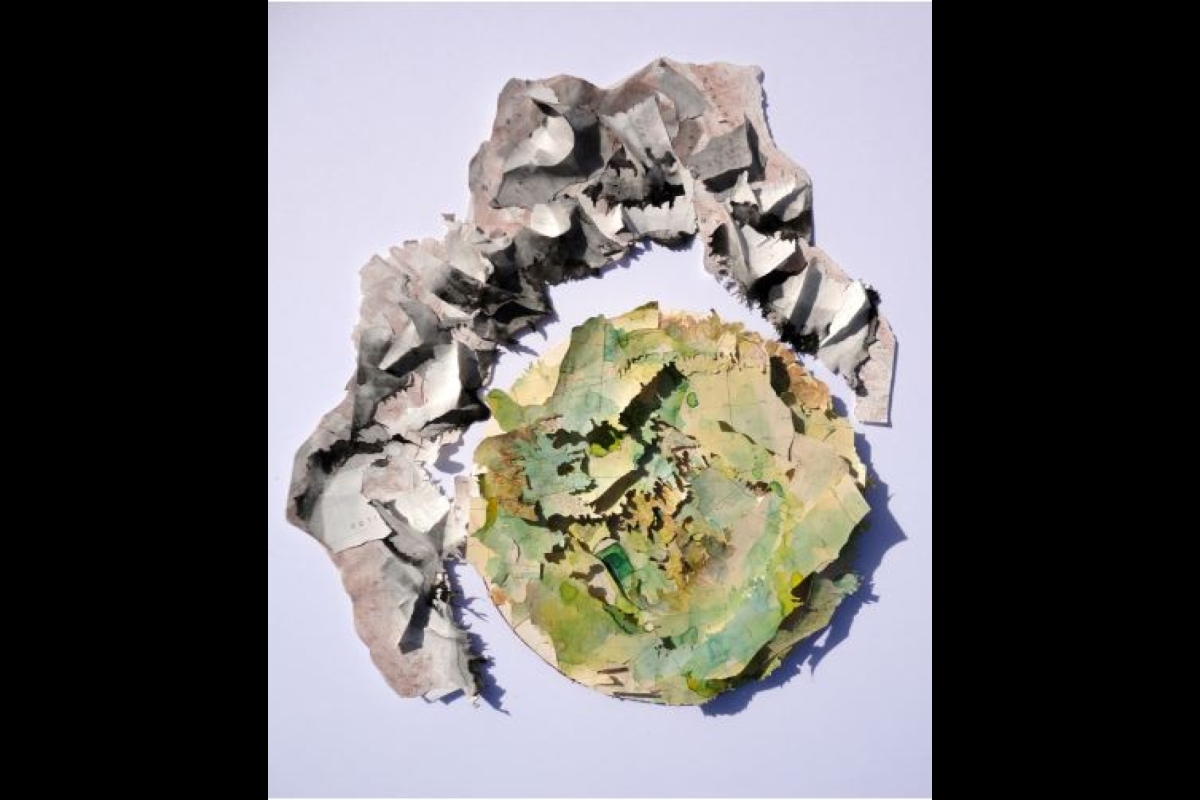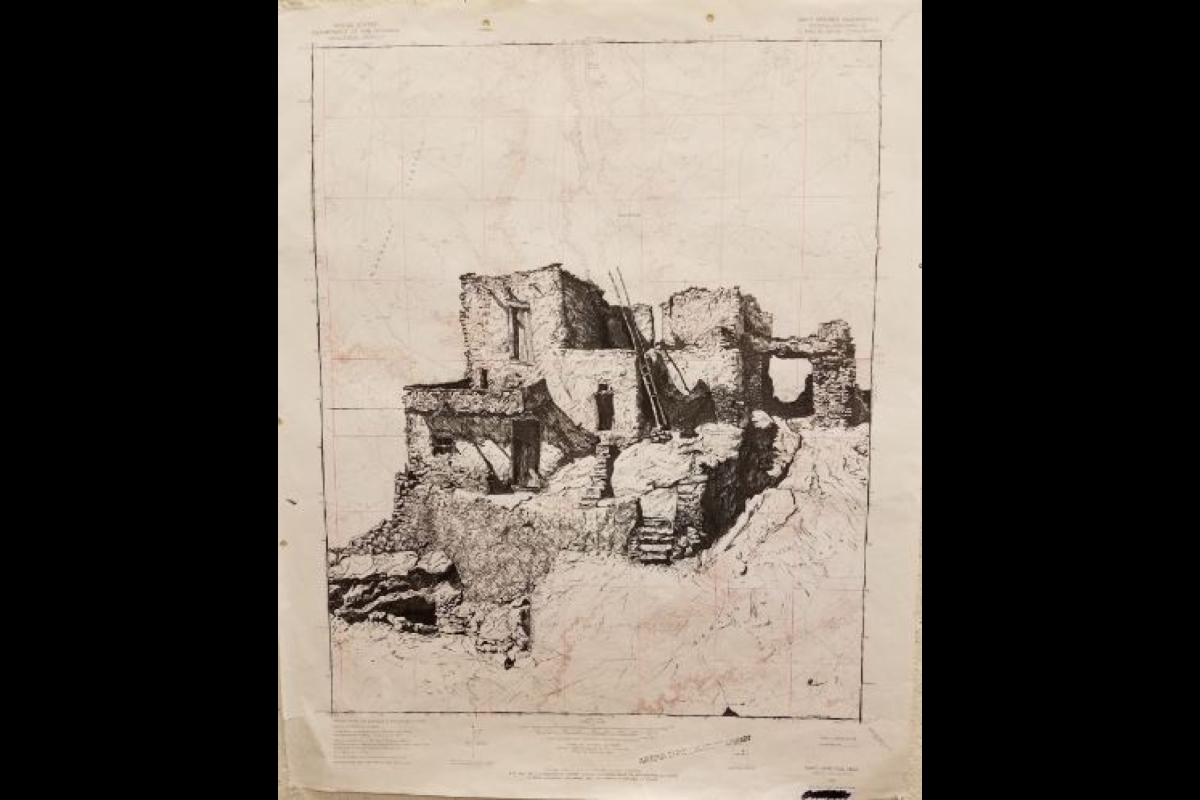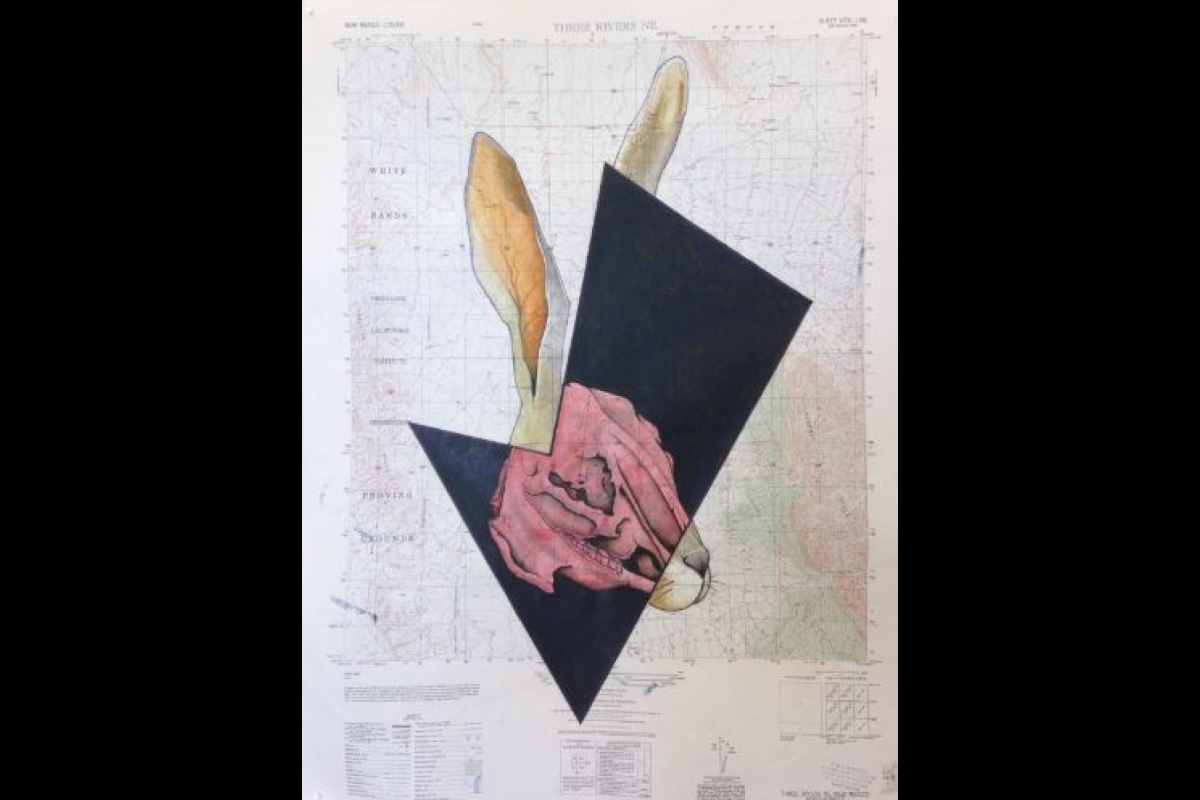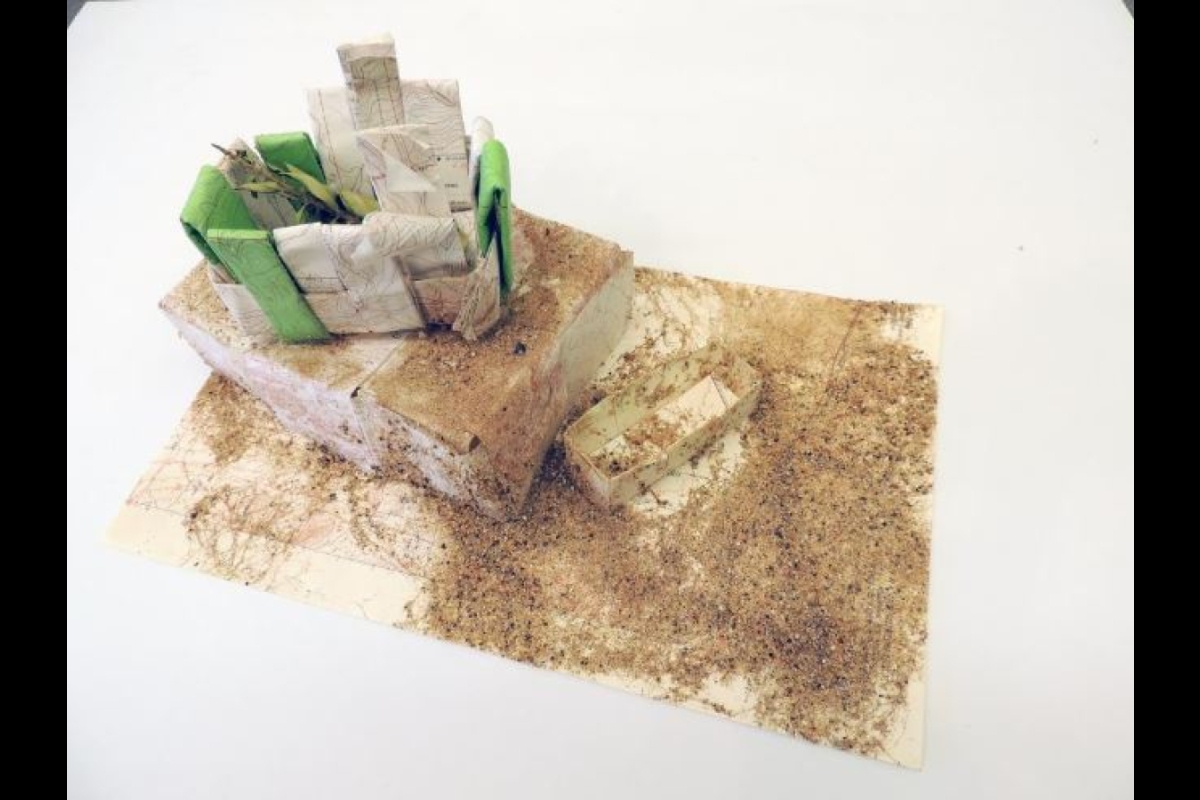Part of the life cycle of a library is the withdrawal of worn-out or excess materials.
In 2013, the ASU Library began to withdraw duplicate copies of topographic maps that were stacked mile-high and taking up space in the library’s Map and Geospatial Hub.
The maps were offered to various organizations. A few were claimed, but the majority were not.
Until the following year, when Ellen Meissinger discovered them. She brought a cart to Noble Library and loaded it up.
“I rarely turn down free materials, and maps are a fantastic resource,” said Meissinger, a fine arts professor in the School of Art within the Herberger Institute for Design and the Arts who supervises one of the largest watercolor and water-based media arts programs in the country.
In Meissinger's “Art on Paper” class, students are challenged to develop critical awareness as well as the ability to articulate critical opinions, all while exploring conceptual and technical approaches combining painting and drawing.
The class works with a variety of paper materials, including synthetic paper, colored paper and used books. Maps were added to the rotation in 2014.
“Working on the maps is one of my personal favorites,” Meissinger said. “Maps give a structure to start with rather than just a blank sheet of paper. I saw working with the maps as a fantastic opportunity to have a different kind of paper resource as a starting point for class assignments.”
Those assignments have become the driving force of the Creative Cartography program, a five-year collaboration between the Map and Geospatial Hub and the School of Art that provides students entry into the world of cartography and the opportunity to exhibit their work.
Over the last five years, Meissinger has worked to build the program with Karina Wilhelm, a map specialist at ASU Library who has been busy preparing for the 2018 installment of Creative Cartography.
Each year, Wilhelm adds the students' artwork to the unique online collection she began curating in 2014.
"It's been very important to me from the beginning that students have as many chances as possible to display their art," Wilhelm said. "I also wanted to have a more permanent record of the exhibits, so I created a library guide to document them. Each year, I add a new subpage."
Wilhelm says the collaboration has created a successful cross-disciplinary relationship.
"The students get to visit the Map and Geospatial Hub for a tour and introduction to the historic and illustrative maps in the library," Wilhelm said. "They might not have previously thought about mapmaking as an art form, but it is an inherently visual medium."
Committed to responsible environmental practices, both Wilhelm and sustainability scholar Meissinger also see the program as an important lesson in sustainability.
“We can repurpose maps in a creative and original way and share our process with the public,” said Meissinger. "Thanks to Karina, there is an exciting online record of what we have accomplished."
This year, Meissinger's students have used the maps as a launch pad for thinking about Place and Space, the name of this year's collection, which will be showcased Nov. 7-26 at Noble Library in the Map and Geospatial Hub (room 380).
An opening reception is scheduled from 4 to 6 p.m., Thursday, Nov. 8.
"The collaboration has been a tremendous success," Meissinger said. "We're hoping it can keep going for another five years."
Written in collaboration with Karina Wilhelm
More Arts, humanities and education

Pen Project helps unlock writing talent for incarcerated writers
It’s a typical Monday afternoon and Lance Graham is on his way to the Arizona State Prison in Goodyear.It’s a familiar scene. Graham has been in prison before.“I feel comfortable in prison because of…

Phoenix civil rights activists highlighted in ASU professor’s latest book
As Phoenix began to grow following WWII, residents from other parts of the country moving to the area often brought with them Jim Crow practices. Racism in the Valley abounded, and one family at…

Happy mistake: Computer error brings ASU Online, on-campus students together to break new ground in research
Every Thursday, a large group of students gathers in the Teotihuacan Research Laboratory (TeoLab) in the basement of the School of Human Evolution and Social Change building on Arizona…


